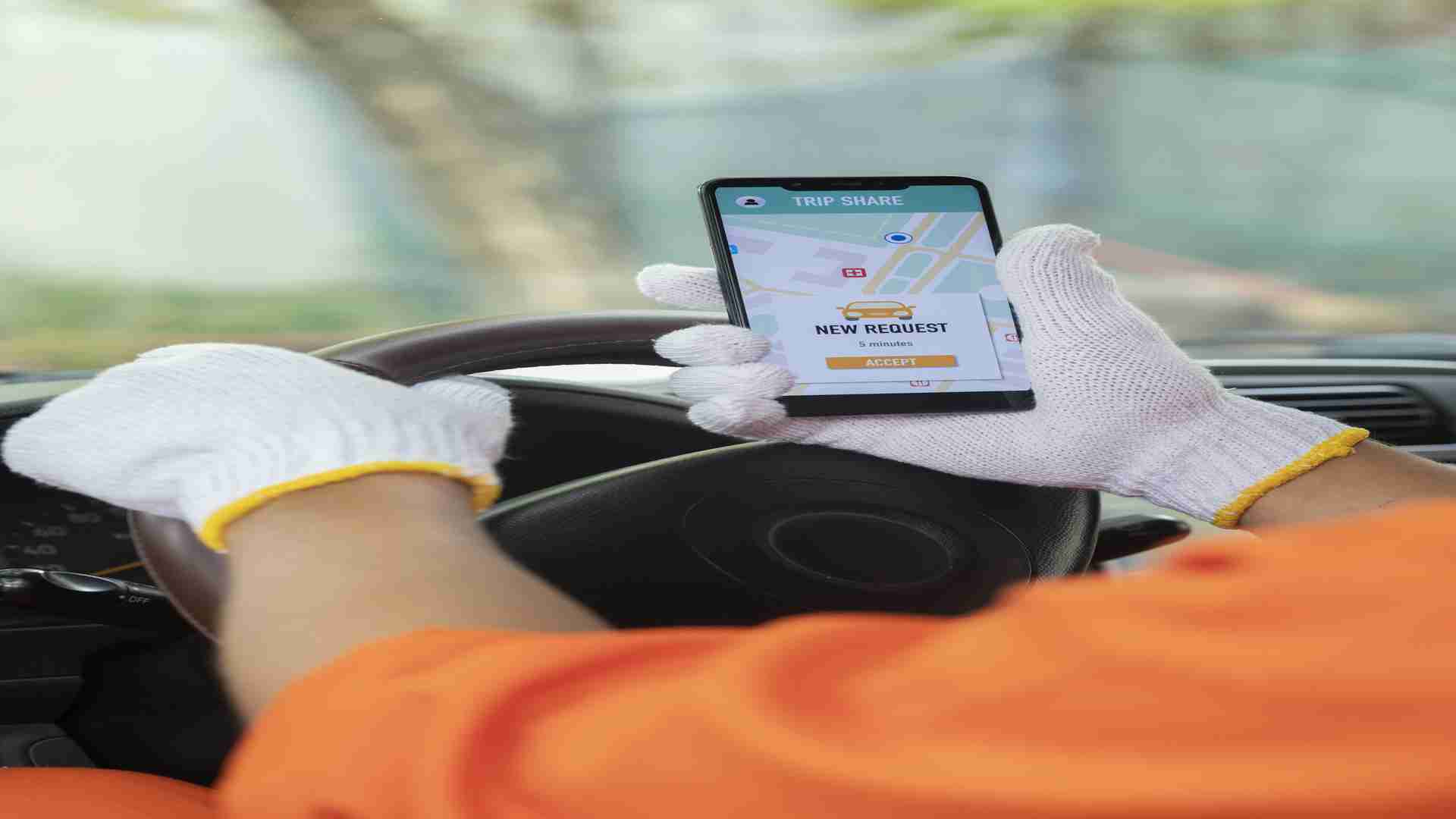-
1. What distinguishes regular cab services from an app similar to Uber?
The main areas where traditional cab services and Uber-like applications diverge are in terms of technology and business strategy. Uber-like apps function through a decentralized infrastructure that links drivers and passengers directly through a smartphone application, in contrast to traditional taxis, which rely on centralized dispatch systems and street hailing.
A number of benefits come with this technology-enabled approach: cashless transactions, upfront fare estimations, real-time ride tracking, and driver ratings and reviews for increased accountability and transparency. Furthermore, features like dynamic routing, automated route allocation, and user-specific settings help Uber-type apps deliver a more smooth and pleasant user experience.
-
2. How are the security and safety of drivers and passengers guaranteed by Uber-like apps?
For Uber-like apps, safety and security for drivers and riders are of utmost importance. These platforms use a variety of safety procedures and guidelines, such as thorough background checks on drivers, car inspections, and safety education courses, in order to accomplish this.
For added peace of mind, customers may also take use of features like driver identification, in-app emergency assistance buttons, and real-time GPS monitoring. Moreover, to protect user data and stop unwanted access or exploitation, Uber-like apps frequently include strong data encryption, secure payment systems, and strict privacy rules.
-
3. How are surge prices handled by Uber-like apps during periods of high demand?
In response, Uber-like apps frequently employ surge pricing, also referred to as dynamic pricing, to maintain a balance between supply and demand during moments of high passenger demand or low driver availability. Prices may dynamically rise as demand outpaces supply in order to attract more drivers to the platform and satisfy the heightened demand.
Surge pricing ensures that drivers are fairly compensated for their time and effort, even though it may result in higher fares for riders during peak hours. Uber-like apps frequently offer upfront fare estimates and surge notifications to alert customers of potential price swings prior to booking a ride, thereby mitigating the impact of surge pricing.
-
4. How are inclusiveness and accessibility in Uber-like apps being addressed?
In order to guarantee that transportation services are available to people with a variety of requirements and preferences, accessibility and inclusivity are essential components of the creation of Uber-like apps. These platforms may provide features like wheelchair-accessible cars, help for riders with impairments, and support for many languages and communication preferences in order to improve accessibility.
Additionally, in order to promote accessibility programs and get input from underrepresented communities, Uber-like apps might collaborate with community organizations, transportation agencies, and disability advocacy groups. Uber-like apps prioritize accessibility and inclusivity in an effort to provide a fair and welcoming transportation ecosystem for all customers.
-
5. How are disagreements and grievances between drivers and passengers handled by Uber-like apps?
Applications that resemble Uber have put in place systems for swiftly and equitably resolving disagreements and grievances between drivers and passengers. Users can usually report problems and seek solutions by contacting customer care via the app or website in the event of a disagreement or complaint.
Customer service representatives are skilled in conducting in-depth investigations into complaints, obtaining pertinent documentation (such as travel itinerary data and conversation logs), and mediating disputes between the parties. Resolutions for disputes of this kind could involve credits, refunds, warnings, or disciplinary action against drivers who break platform rules. Uber-like apps strive to keep its user base satisfied and trusting by encouraging responsibility, openness, and good communication.
-
6. How do applications that mimic Uber handle worries about driver pay and job security?
Due to its reliance on a decentralized workforce of independent contractors, Uber-like applications take driver income and job security very seriously. These platforms may use a variety of tactics, such as variable price structures, incentives, and bonus plans to optimize driver earnings, to allay worries regarding driver income.
Additionally, referral programs, promotions, and tailored incentives for high-demand places or times might be available on Uber-like apps, giving drivers the chance to earn more money. In addition, platforms could give users access to tools for financial planning, insurance, and support systems to improve the stability and wellbeing of drivers. Uber-like apps prioritize driver satisfaction and income sustainability in order to draw and keep a pool of dependable drivers who are dedicated to giving riders excellent service.
-
7. How are local laws and license requirements complied with by Uber-like apps?
Running an Uber-like service in various jurisdictions and regions requires adherence to local laws and licensing requirements.
In order to guarantee adherence to relevant rules and regulations that control transportation services, such as those pertaining to licensing, insurance, taxes, and safety requirements, these platforms usually collaborate closely with regulatory bodies, governmental organizations, and legal specialists. Uber-like applications may also include trip data reporting tools, driver verification procedures, and geofencing technology to show that they are compliant with legal requirements and to solve issues with consumer protection, public safety, and fair competition.
-
8. How do apps that resemble Uber handle issues with carbon emissions and environmental sustainability?
In order to limit their environmental impact and promote a better transportation ecology, Uber-like applications are finding that environmental sustainability and lowering carbon emissions are becoming more and more significant factors.
Platforms may take steps to allay these worries, like encouraging carpooling, rewarding environmentally friendly car choices (like electric or hybrid models), and funding carbon offset schemes. Furthermore, Uber-like apps might collaborate with government bodies, urban planners, and environmental organizations to promote infrastructure upgrades, sustainable transportation laws, and modal changes toward more ecologically friendly forms of transportation. Uber-like applications can help lessen the negative environmental effects of urban mobility and create a healthier earth for coming generations by supporting sustainability initiatives and lowering dependency on fossil fuels.
-
9. How are user information security and privacy for Uber-like apps ensured?
The answer is that for Uber-type apps that handle sensitive user data like payment credentials, location data, and personal details, data privacy and security are top priorities. These platforms use strong encryption methods, safe authentication procedures, and adherence to data protection laws (such as the CCPA and GDPR) to preserve user privacy and security.
Uber-like apps might also regularly perform penetration tests, security audits, and employee training courses in order to find and fix any vulnerabilities or risks. Furthermore, platforms give users transparency and control over their data by implementing permission processes, privacy settings, and explicit data usage policies. Uber-like applications prioritize data privacy and security in order to uphold the integrity of their platform and foster user confidence.
-
10. How do applications that resemble Uber handle issues with worker rights and the gig economy?
Talks concerning the designation of drivers as independent contractors vs workers and the consequences for labor rights, benefits, and safeguards have been spurred by worries about the gig economy and worker rights. Although drivers on Uber-like apps are usually classified as independent contractors, these applications may converse with legislators, labor unions, and advocacy groups to discuss these issues and look into different approaches to worker classification or laws pertaining to the gig economy.
Platforms may also provide drivers with access to certain protections and perks, such insurance, flexible work schedules, and dispute resolution procedures, in an effort to improve worker welfare and lessen the dangers connected with contingent labor. Uber-like applications aim to strike a balance between the needs of drivers, users, and regulators while promoting a sustainable and fair gig economy ecosystem. They do this by participating in constructive discourse and investigating creative solutions.



















